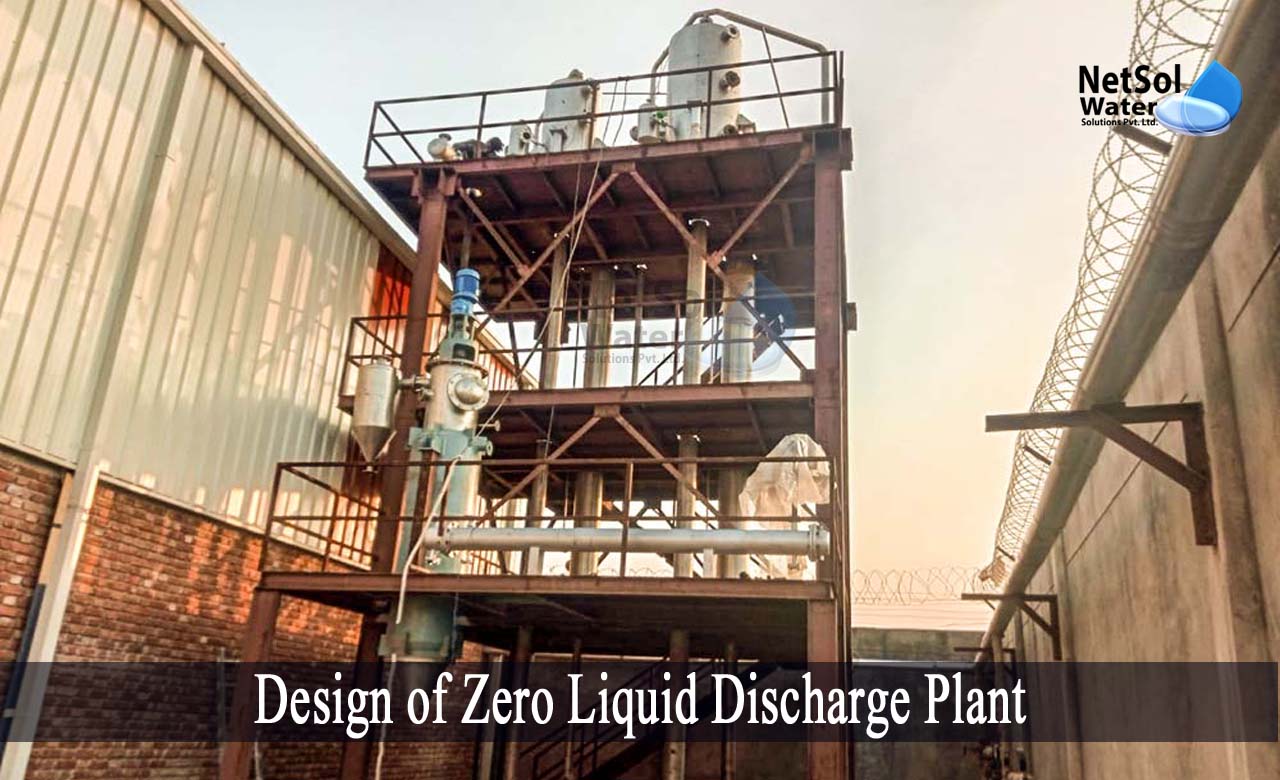How to Design of Zero Liquid Discharge Plant?
The Zero Liquid Discharge (ZLD) treatment method aims to completely eliminate, all liquid waste from a system. The goal of ZLD is to produce clean water that is suitable for reuse, while also reducing wastewater costs. Therefore, it becomes necessary to design a Zero Liquid Discharge Plant, more efficiently and economically.
Basic Zero Liquid Discharge Plant Design
Although a wastewater stream's origins can vary, a ZLD system typically consists of two phases.
A: Pre-Concentration:Electro dialysis or membrane brine concentrators are typically used to pre-concentrate the brine. These techniques can recover between 60 and 80% of the water, and concentrate the stream to a high salinity.
B: Evaporation or crystallization:It evaporates all the remaining water, collects it, and transports it for further use. The leftover waste is then sent to a crystallizer, where the water is heated to a boil, and all the impurities are crystallised and filtered out as a solid.
Let us discuss these in detail:
· Pre-concentration
Pre-concentration of the liquid waste stream is a crucial step since it drastically reduces the waste's volume, and the size of the expensive evaporation or crystallization stage. Typically, it is accomplished using electrodialysis (ED), or membrane techniques including membrane distillation and forward osmosis.
Electrodialysis
In the membrane process known as electrodialysis, electrodes are used to generate an electric field. It forces positively and negatively charged species with semi-permeable membranes, respectively. To concentrate the brine to saturation levels, ED is employed several times. For extremely high water recovery, it is frequently used in tandem with RO. Because ED eliminates the ions rather than the water, it varies from RO, while RO does the opposite.
Due to this, ED does not remove silica or dissolved organics, which is crucial if the clean stream is to be recycled. ED, RO, solids, and organics removal from the feed are all necessary.
Reverse electrodialysis (EDR)
To remove fouling and scaling, the polarity of the electrodes is reversed multiple times per hour, while fresh water and concentrated wastewater are exchanged inside the membrane stack.
Forward Osmosis
FO uses a semi-permeable osmotic membrane technique to separate water from dissolved solutes, such as ions, molecules, and bigger particles without the use of applied pressure. It means that the process requires a lot less energy. FO often makes use of electrical and thermal energy. Low grade waste heat, which can be found everywhere in most industrial or neighbouring regions, can be used to replace thermal energy.
Distillation using membranes
Hydrophobic membranes are used in MD, a thermally induced transport mechanism. The method's driving force is the differential in vapour pressure, between the membrane holes on each side, which enables the mass and heat transfer of the volatile solution components (e.g. water). MD is a promising separation technique due to its ease of use, versatility in using waste heat, or other energy sources including solar and geothermal energy, and ability to be linked with other processes.
· Crystallization and Evaporation
The next stage after pre-concentrating the waste stream is to create solid using heat processes, or evaporation while recycling the evaporated water. If the evaporation process doesn't stop before the solute starts to precipitate, it is considered to be crystallizing.
Process of Crystallization and Evaporation
1: Water is concentrated up to the initial crystallization point, using the energy-efficient method of falling film evaporation (super-saturation). By adding acid, the solution will be neutralized, preventing scaling and damage to the heat exchangers when heated.
2: In order to release dissolved oxygen, carbon dioxide, and other non-condensable gases, de-aeration is frequently utilized.
3: The brine that is being removed from the evaporator enters a forced-circulation crystallizer, where the water is concentrated past the point at which the pollutants can be dissolved, and crystals are produced. A filter press or a centrifuge is used to dewater the finished product, and the concentrate (mother liquor) is then added back to the crystallizer.
4: As a result, there is no liquid discharge into the system, because the three phases' collected condensate (water) is returned to the process. Condensate polishing may be necessary before it is re-used if organics are present. A holding tank is where the product water is then transported.
At this stage, the solid waste will either be recycled or dumped in a landfill.
Choose the best ZLD Plant manufacturers in India
Finding a system for your company that is both economical and environmentally friendly can be difficult, particularly in light of the increasingly stringent effluent rules that are limiting your alternatives for discharge. That is why; you must consult experts, like Netsol Water, to manufacture your ZLD Systems.
Netsol Water is Greater Noida-based leading water & wastewater treatment plant manufacturer. We are industry's most demanding company based on client review and work quality. We are known as best commercial RO plant manufacturers, industrial RO plant manufacturer, sewage treatment plant manufacturer, Water Softener Plant Manufacturers and effluent treatment plant manufacturers. Apart from this 24x7 customer support is our USP. Call on +91-9650608473, or write us at enquiry@netsolwater.com for any support, inquiry or product-purchase related query.



